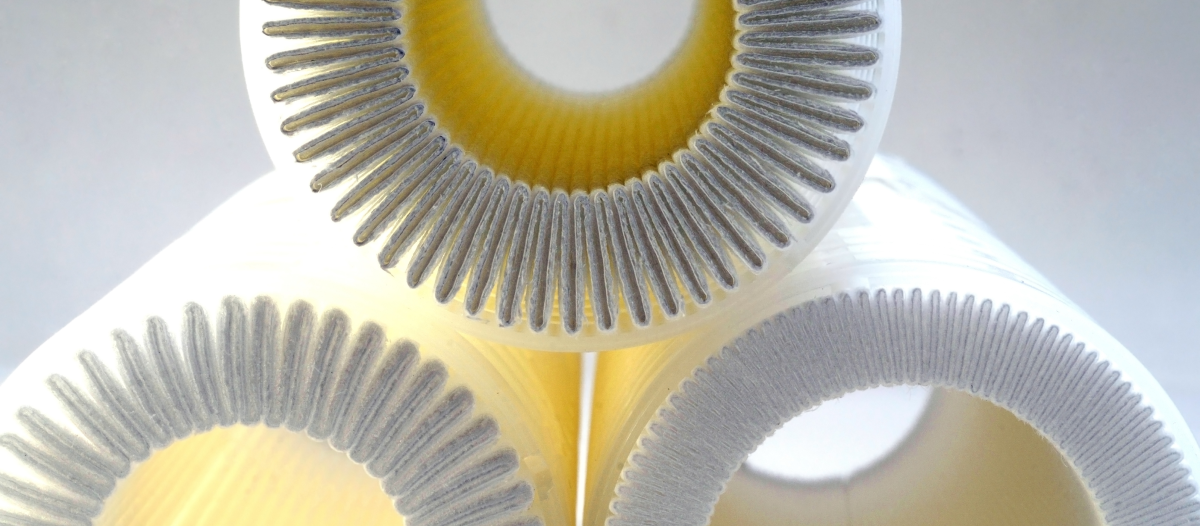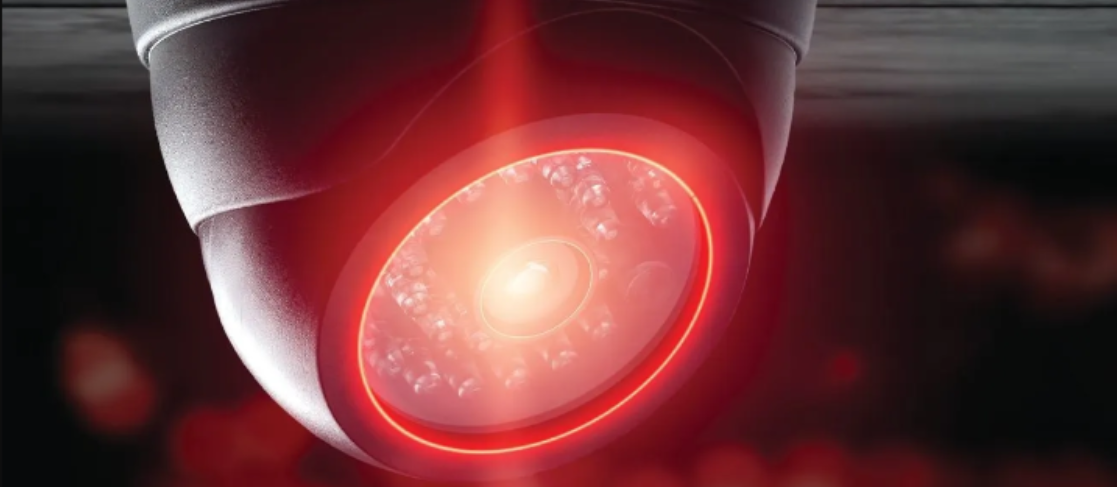An Underestimated Role
Air filters in facility operations

Understanding air filters
Air filters are integral to more than just purifying air; they are closely linked to the overall operational efficiency of all facilities, from the factory floor to the distribution warehouse. Air filter choice, quality and upkeep directly affect energy consumption and operational expenditure. They serve a fundamental purpose: to remove contaminants from the air, ensuring a clean and safe environment within facilities. They trap particles like dust, pollen, mold and bacteria as air passes through the filter medium. Understanding the various types of air filters and their applications is essential to selecting the right filter for a facility’s specific needs. The FM’s filter choice impacts air quality, operational efficiency and energy consumption.
According to the U.S. Environmental Protection Agency (EPA), high efficiency particulate air HEPA filters are designed to capture 99.97 percent of particles that are 0.3 microns in diameter. These filters are commonly used in environments where air quality is paramount, such as hospitals, laboratories and cleanrooms. HEPA filters are effective against dust, pollen, mold and bacteria.
Carbon filters, which use activated carbon to absorb odors, gasses and chemical vapors, are also available. They can be useful in industrial settings where air pollution from chemicals and fumes is a concern; however, carbon filters often need to be combined with other types of filters for comprehensive air purification.
The standard air filter in most facilities is the disposable, single-use type, typically made from fiberglass or pleated paper. Although these filters can be inexpensive and easy to replace, they present considerable environmental and financial drawbacks. Disposable filters require frequent replacements to maintain efficiency and air quality, leading to substantial landfill waste and increased operational costs. Their convenience is overshadowed by the continuous cycle of use and disposal, which is neither sustainable nor economically efficient in the long run.
Finally, there are filters engineered using durable materials, such as aluminum or plastic, which can be cleaned and reused multiple times. Washable and reusable filters are environmentally friendly and cost-effective over the long term. They suit residential, commercial and industrial applications and require simple maintenance to ensure optimal performance.
Importance of air quality for operations
 Maintaining clean air within a facility is imperative for several reasons, including ensuring the health and safety of occupants, protecting machinery and optimizing energy efficiency. Poor air quality can significantly impact operational efficiency, leading to increased maintenance costs, downtime and energy consumption.
Maintaining clean air within a facility is imperative for several reasons, including ensuring the health and safety of occupants, protecting machinery and optimizing energy efficiency. Poor air quality can significantly impact operational efficiency, leading to increased maintenance costs, downtime and energy consumption.
Depending on the type of facility, there are a variety of contaminants in the air to consider. Dust particles are ubiquitous in many environments, especially in industrial and manufacturing settings. Dust accumulation on machinery can lead to overheating, mechanical wear and reduced efficiency. Regular air filtration helps prevent these issues, ensuring smooth and reliable operation.
Fumes from welding, painting and chemical treatments can also be hazardous to equipment and personnel. Effective air filtration removes these harmful particles, protecting sensitive equipment from corrosion and minimizing health risks to workers. Some facilities must battle even chemical vapors, which can originate from various sources including industrial processes, cleaning agents and off-gassing from materials. These vapors can be corrosive and toxic, necessitating robust filtration to safeguard equipment and human health.
Contaminants can degrade lubricants and cause mechanical parts to wear prematurely, leading to shorter equipment lifespans. Clean air is essential to prevent these issues and maintain reliable operations. Poor air quality also forces HVAC systems to work harder, increasing energy consumption. Clogged filters reduce airflow, making it more difficult to maintain desired temperature and humidity levels. This can lead to higher energy bills and accelerate wear and tear on the HVAC system. Regular maintenance and high-quality air filters can significantly improve energy efficiency.
Outdoor air quality can also influence indoor air quality (IAQ). Air pollution, industrial emissions, vehicular exhaust, pollen and natural disasters such as wildfires can lead to increased concentrations of pollutants like particulate matter (PM2.5 and PM10), nitrogen dioxide (NO2), sulfur dioxide (SO2) and volatile organic compounds (VOCs), which can infiltrate indoor environments through ventilation systems, open windows and doors. Prolonged exposure to these pollutants has been associated with respiratory and cardiovascular diseases, decreased lung function and other serious health issues. In industrial settings, contaminants can damage sensitive equipment, leading to operational inefficiencies and increased maintenance costs.
Investing in superior air filters ensures reliable protection against environmental threats, enhancing both health and operational efficiency.
Health & safety considerations
Air quality is a major factor in worker health and safety, impacting everything from respiratory health to workplace well-being. Poor IAQ can lead to serious health issues, reduce productivity and increase absenteeism, making it imperative for facilities to implement robust air filtration systems.
Exposure to airborne pollutants can significantly affect worker health. Short-term exposure can cause symptoms like headaches, dizziness and irritation of the eyes, nose and throat. Chronic exposure to pollutants like dust and chemical vapors can lead to respiratory issues such as asthma and bronchitis, while fine particulate matter (PM2.5) can cause cardiovascular problems like heart disease and hypertension. Contaminants such as pollen, dust mites and mold spores can also trigger allergic reactions, including sneezing, itchy eyes and skin rashes. Additionally, long-term exposure to toxic chemicals and fumes can result in severe health conditions, including certain cancers and neurological disorders.
To mitigate these risks, regulatory IAQ standards are enforced by agencies like OSHA and the EPA. OSHA sets and enforces standards to ensure safe and healthful working conditions, mandating permissible exposure limits (PELs) for various airborne contaminants and requiring employers to monitor and control these levels to protect workers. The EPA regulates air quality under the Clean Air Act, setting standards for outdoor air quality that indirectly impact indoor air quality and providing guidelines for indoor air quality in workplaces and schools.
Recently, a chain of indoor climbing gyms faced significant air quality challenges due to airborne chalk dust. This fine particulate matter poses risks to health and comfort while impacting environmental sustainability. The chain's smaller locations required six filters per replacement cycle, while larger gyms used up to 60 filters, necessitating frequent replacements during peak seasons. The gym adopted washable and reusable industrial air filters, significantly decreasing replacement frequency and reducing its environmental footprint. This shift to greener technology lowered operational costs and minimized landfill waste, demonstrating a strong commitment to sustainability and operational efficiency.
Environmental impact
Some FMs might not think disposable filter waste is important, but it piles up quickly and has severe environmental consequences. Globally, millions of single-use filters are discarded every year, contributing to the growing mountains of landfill waste. These filters are not biodegradable and can take hundreds of years to break down. During this lengthy decomposition process, they release harmful chemicals and greenhouse gasses into the atmosphere, contributing to pollution and climate change. The sheer volume of discarded filters also occupies valuable landfill space, exacerbating waste management challenges and leading to further environmental degradation. Transitioning to reusable and washable filters can dramatically reduce this environmental burden.
 Selecting the right air filters
Selecting the right air filters
Choosing the appropriate air filters for a facility is important for maintaining IAQ, optimizing energy efficiency and ensuring operational reliability. When selecting air filters to meet a facility’s specific needs, several factors should be considered. Some of these factors include:
- Efficiency: An air filter’s efficiency is measured by its ability to capture airborne particles. Filters are rated using the minimum efficiency reporting value (MERV) scale, which ranges from 1 to 16 for most commercial and residential filters. Higher MERV ratings indicate better filtration efficiency but may also result in higher resistance to airflow. Balancing filtration efficiency with airflow requirements is essential to ensure optimal performance.
- Air Flow Rate: The air flow rate, or the amount of air that passes through the filter, is crucial for maintaining adequate ventilation and temperature control. Filters with high airflow resistance can strain HVAC systems, leading to increased energy consumption and reduced efficiency. Selecting filters with an appropriate balance between airflow and filtration efficiency is vital.
- Filter Media: The material used in the filter media affects its performance and lifespan. Common filter media include fiberglass, pleated paper, polyester and activated carbon. Each type has its advantages and is suited for different applications.
Regular air filter maintenance is essential for effectiveness, but the frequency depends on factors like filter type, environmental conditions and manufacturer recommendations. High-traffic or heavily polluted environments may require more frequent maintenance, making establishing a consistent maintenance schedule essential to ensure optimal air quality and system performance.
By transitioning to reusable filters and following these maintenance steps, FMs can ensure smoother operations, reduce environmental impact and achieve significant cost savings. Investing in high-quality, washable air filters is a strategic decision that pays off through enhanced sustainability and operational efficiency.
Making the air filtration change
The broader implications of investing in high-quality air filters include enhanced energy efficiency and sustainability. Advanced filters reduce the workload on HVAC systems, leading to lower energy consumption and environmental impact. Reusable filters, in particular, provide a sustainable alternative to disposable ones, significantly reducing waste and supporting environmental goals.
Looking toward the future, FMs must recognize the air filters’ powerful role and prioritize their investment. Choosing high-quality, efficient air filters and maintaining them properly will ensure optimal air quality, enhance operational efficiency and provide significant cost savings for many years.
Investing in advanced air filtration technologies is more than a financial decision — it is a commitment to the health and sustainability of the workplace and the environment. FMs who embrace these systems will benefit from a cleaner, healthier and more efficient operation, setting a standard for others to follow.

Read more on Operations & Maintenance , Technology and Occupancy & Human Factors
Explore All FMJ Topics









